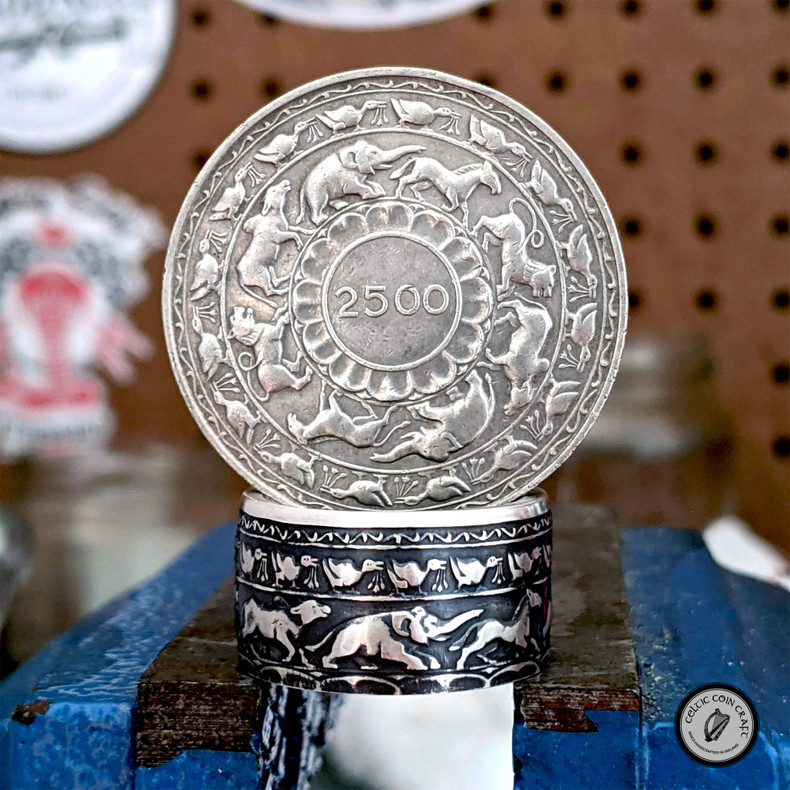There are three characteristics of a coin to consider when determining if it is suitable to make into a coin ring: metal composition, size, and design.
Metal Composition
The ideal metal composition of a coin to use for a ring is silver. Silver was commonly used in circulating coins until the mid 1900s. When the value of silver became greater than the face value of the coins made from it, it was replaced with less-valuable metals. A coin with a silver percentage of between 80% & 93% is preferable. Pure silver coins (.999) are very soft which makes them unsuitable.
The most common metals that modern coins are made from are nickel, copper, and steel which are not ideal for rings. Nickel is an allergen that can cause skin irritation, copper can cause a mark on your finger, and steel is too hard to work with.
While silver is not used in circulating coins these days, most countries issue silver coins as collector's items. Some examples of rings made from these silver collector coins are the Irish Deer coin ring, the German Constitution coin ring, and the Netherlands 2009 coin ring.

Size
The diameter and thickness of a coin dictates the range of ring sizes it can be made into. A small coin, like the Victorian Shilling (23.5 mm in diameter) can be made into ring sizes from 4 to 7.5 whereas a large coin, like the Morgan Dollar (38mm) can be made from size 10 to 17. We rarely make rings from coins that are smaller than the shilling and the dollar is the largest coin we use.

Design
The first thing we do with a coin before making it into a ring is to punch a hole in the middle of it. If a coin has most of its design details in the middle and very few around the outside then it is unlikely to make an attractive ring.
A great place to look up coins' metal composition, size etc. is Numista - the catalogue of world coins.
If you are interested in having a ring made from a particular coin that isn't already listed on our site or have any questions get in touch today.
